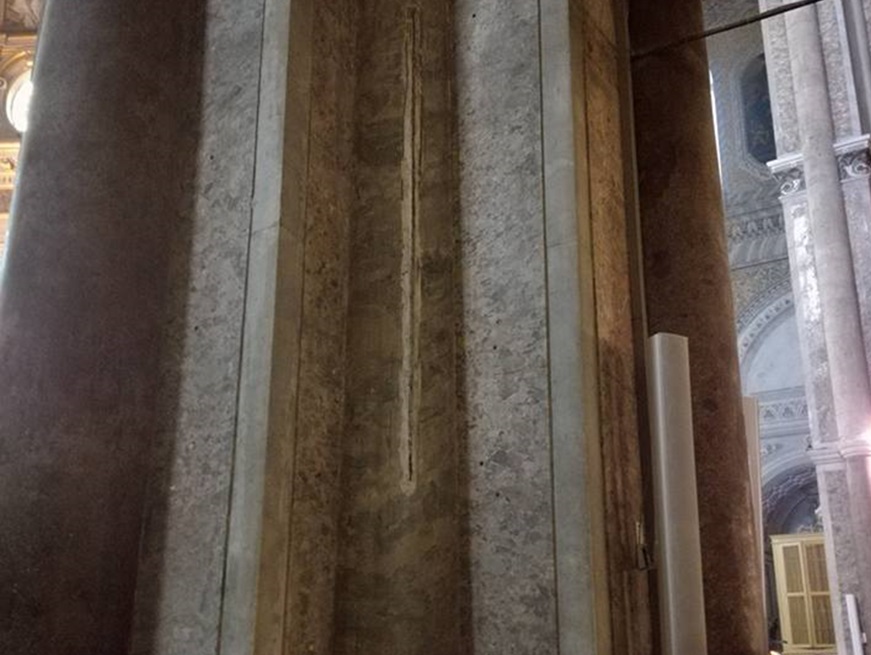Few, very few, perhaps no one notices this metal strip walled into the left pillar of the cross of the Duomo.
An anonymous iron rod that barely sticks out of the painted stucco, which almost makes you want to cover it with lime.
Yet it is an object of extraordinary historical importance, escaped by chance from destruction a few decades ago when, during restoration work, was mistaken for an old iron.
The Passus Ferreus represents the surveying which had to be referred to in all contracts of sale of land and, in general, in every commercial contract in which the canonical measure was necessary. The lath is a sample of the Byzantine linear unit of measurement defined in the deeds "Passus Ferreus sanctam Ecclesiam Neapolitanam" cited as a guarantee against any fraud. In fact, the lath in question should date back to the Justinian era when Naples became an autonomous Byzantine duchy.
The lath, during the Byzantine government, was embedded in a column in execution of one of the specifications of the "Pragmatica Sanctio Pro Petitione Vigilii" issued by Justinian I, Emperor of Byzantium from 527 to "… remedy the evils that the Tyrannorum bellica confusio and gothica ferocitas …" had brought to Italy during the Gothic War (535-553) and with the aim of reaffirming the rights of owners from any usurpation; alleviate tax pressure; reorder the system of weights and measures; more fairly administer justice and regulate the course of the currency.
The lath in question is the only surviving example of many canonical laths of the linear unit of measurement placed in the main churches of Byzantine cities and therefore of inestimable value.













